Last time around in the ‘Show us Yours’ feature I showed the items in my small river box which I deem to be essential for my fishing for species such as grayling, roach and dace on the small chalk streams I tend to target. With the river season just drawing to a close I was in the process of tidying up and putting away all of my river boxes and thought it was probably timely to lift the lid on my barbel box and take a look at some of the kit I’d be lost without when I’m tackling that species.
First off I have to say that my barbel box isn’t actually one box – it’s four! There is the main Fox box I’m holding up here that contains all of the bits I need wherever I’m fishing but in addition to that there are three soft, zipped accessory boxes which contain feeders, leads and ‘other bits’ which I don’t always need.
This feature looks inside all of them but the chances are I’ll not have all of them with me at any one time as I tend to customise my rucksack contents depending on venue and conditions as I don’t really, for example, want to be carrying a bag of 8 to 12oz leads in summer with low water…
Droppem
First out of the box is one of the many things I use to help keep my end tackle pinned down, something I think is absolutely fundamental in many (but certainly not all) barbel fishing situations.

There are any number of rig putties on the market, all of which make various claims about their density and ease of use but for me Kryston’s Droppem is the best of the lot. It is easy to mould, simple to apply and tends to stay put without slipping. I use a couple of ‘mouse droppings’ on a short length of coated braid and a blob every 6in or so on longer fluoro or mono hooklengths.
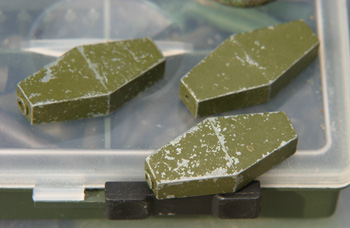 Back Leads
Back Leads
I rarely fish without a back lead, sometimes two, on the smaller rivers I tend to fish unless it’s a big winter flood – and how many of those do we see these days?
As with the putty there are all types available but for me the humble coffin lead is hard to beat as it’s perfectly sized, shaped and weighted to do exactly the job you ask of it. I sometimes semi-fix a coffin above my hooklength or leadcore with a rubber float stop then employ a smaller flying back lead above it to keep more line on the deck and if I’m on the Thames in summer or a section of the Kennet that’s busy with barges I’ll also have a captive back lead right under the rod top to keep my line out of the way of boats.
Leadcore
And yet another line management tool – not that I’m paranoid about keeping my line on the deck or anything – but most of my set ups incorporate a metre or so of leadcore above my hook length and in conjunction with the putty below it, the back leads above it and a slack line at the rod top everything is neat.

It’s not essential, or indeed advisable, to use leadcore in all conditions and certainly not on all rivers but it can give a real edge at times. I love the Fox adaptive camo stuff as the disruptive pattern gives great underwater camo but the same effect can be achieved with a couple of waterproof marker pens and some pale leadcore if needed.
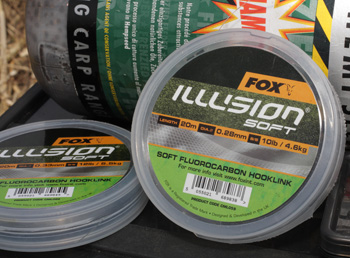 Illusion Fluorocarbon
Illusion Fluorocarbon
Invisible underwater and hugs the bottom…well, not quite but if you keep it clean it is very difficult to detect and it does sink very well indeed – although as indicated above I spot it with Droppem anyway.
Fluoro is my hooklength of choice for most of my barbel fishing these days. I tend to fish 12lb Illusion as my main line with 10lb soft as my hook length although I will step up to 12lb, or drop down to 8lb depending upon conditions.
I’ve tried and bench tested most brands of fluorocarbon over the years and keep coming back to the Illusion (in the higher breaking strains anyway) as it is surprisingly supple, knots well and has a good diameter to breaking strain ratio.
I’m tending to use increasingly long hook lengths these days (2m) and I’ve yet to come across anything which performs as well.
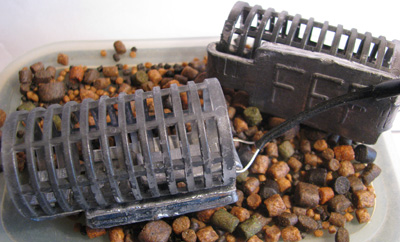 Fisky’s Fantastic Feeders
Fisky’s Fantastic Feeders
I used to use ‘standard’ heavy feeders and load them up with ‘dead cow’ leads so they would hold station in serious conditions until Martin Hemington (thanks Martin) put me in touch with Paul Fisk.
Fisky’s handmade jobs are well designed, perfectly sized and are available with a loading of up to 8oz. Nothing more to say really they are quite simply the best heavy feeders in the world – ever (Ha…that will upset someone….) and I don’t know how I managed without them.
Cork Balls
Most of my barbel fishing is with paste hookbaits and for me the ideal way to present it is moulded around a hair-rigged piece of cork. Not a piece of cork so large that the paste is popped up, but sufficient so the weight of the hook is neutralised and the bait has neutral buoyancy, as if it was a free offering.

I trim the cork ball to suit the size of bait I’m using (pea-sized in clear water / summer, hazlenut-sized in coloured water / winter) and the rough edges are ideal for the paste to adhere to.
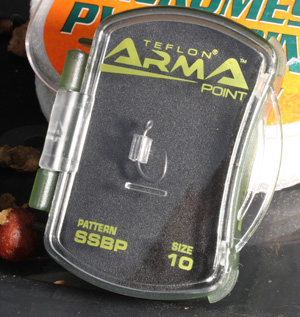 Beaked Point Hooks
Beaked Point Hooks
Most of the rivers I fish have a hard gravel substrate and repeated casting over gravel is notorious for dulling hook points but a hook with a beaked point tends to withstand the abrasion – although you still need to check the point every cast.
I really can’t see the ‘point’ of using a hook pattern with a straight point when barbel fishing on the types of river that barbel tend to live in and once a hook goes into a barbel’s mouth it doesn’t really matter because it isn’t coming out again without hooking the fish! I use ArmaPoint SSBPs, usually in size 10, but I will step up to a 9 on occasion; I do carry 8s but don’t think I’ve ever used one in anger yet!
Rubber Baits
I tend to do a fair bit of maggot and caster fishing for barbel if I get out after them during the summer months and love the fact I can use a hookbait which resists the attentions of minnows and other small bait stealers, but which is buoyant enough to neutralise the weight of the hook.
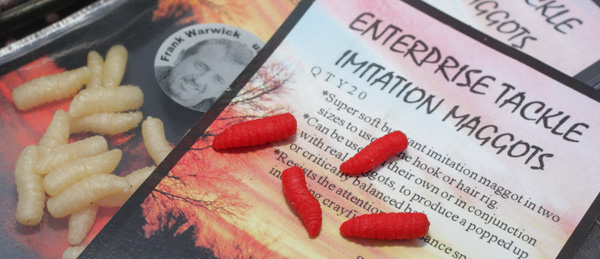
When I first started using the Enterprise maggots and casters for barbel I did so in conjunction with the real thing – as a confidence measure I guess – but there is no need to and these days I fish just rubbers.
A new development are rubber ‘pellet skins’ which look like a pellet but which can be filled with paste and I can see me having a good play with those next season.
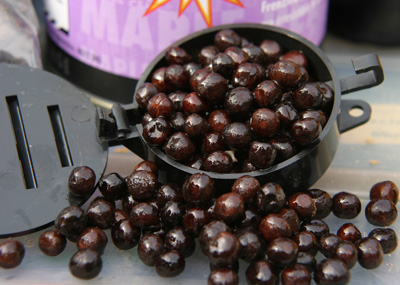 Thamesley Bait Dropper
Thamesley Bait Dropper
With PVA becoming ever more popular you don’t see that many barbel anglers still using a good old fashioned bait dropper but I still love the little Thamesley models for their ease of use and there are times when only a dropper will do to get a bed of bait exactly where you need it.
They don’t have a massive payload but they hold enough to cast easily with a standard barbel rod, they rarely malfunction, are a lovely dull black colour and are easy to tease into position – helped by the fact they have a lightweight plastic body.
The bad news is that they are not made any longer, although I believe there is a similar design available from a different company. As is always the case when you find a bit of kit you really love it pays to buy a job lot and stockpile it. I’ve a dozen or so of these in the tackle room and given I only seem to lose one every few years they should out last me!
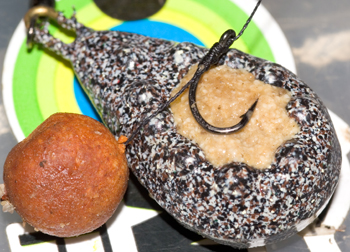 Leads with Holes
Leads with Holes
I’ve a good selection of watch leads and Korda Grippas in my lead bag from about 1oz up to around 12oz. From a purely physical point of view they are profiled with a low centre of gravity and a high surface area to hold station well in serious currents but equally important in my book is that they have a hole in the middle which I can plug with a lump of paste.
In winter I tend to fish mostly single hookbaits only but I do load the middle of my lead with paste to ensure I create a good scent corridor downstream. It is possible to mould paste into feeders of various types, or around standard leads, but nothing grips paste as well as a lead with a hole!










